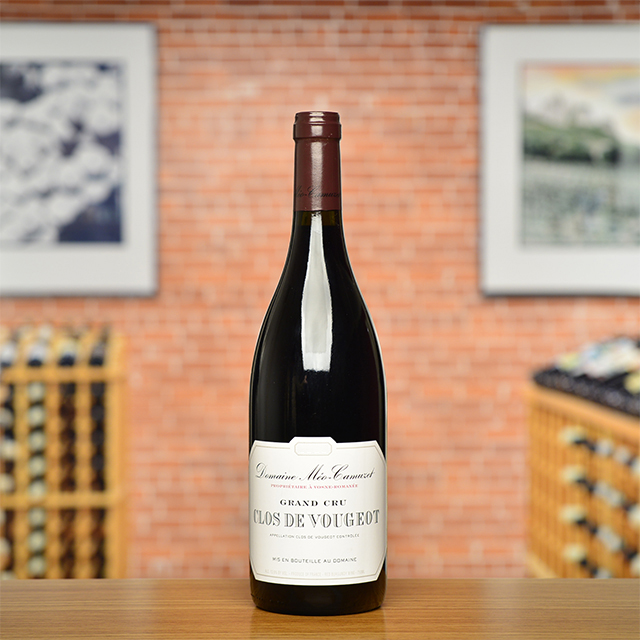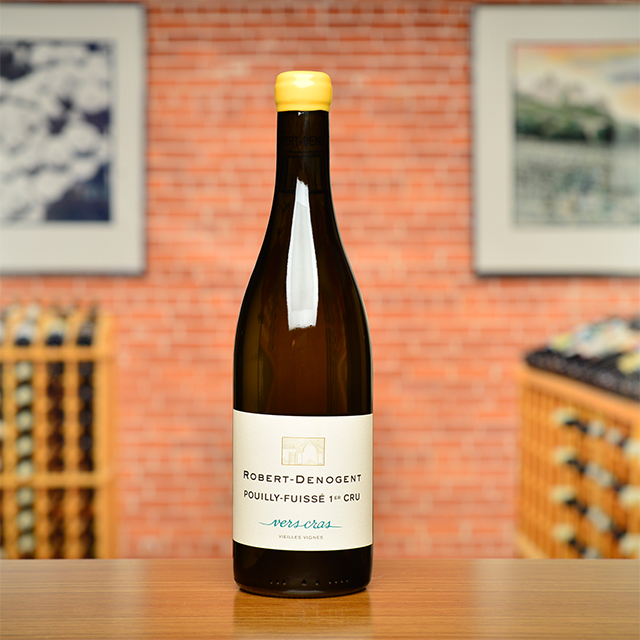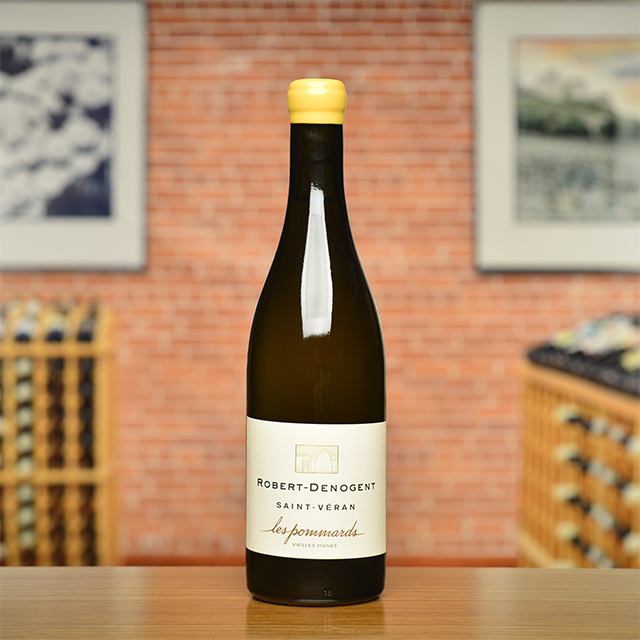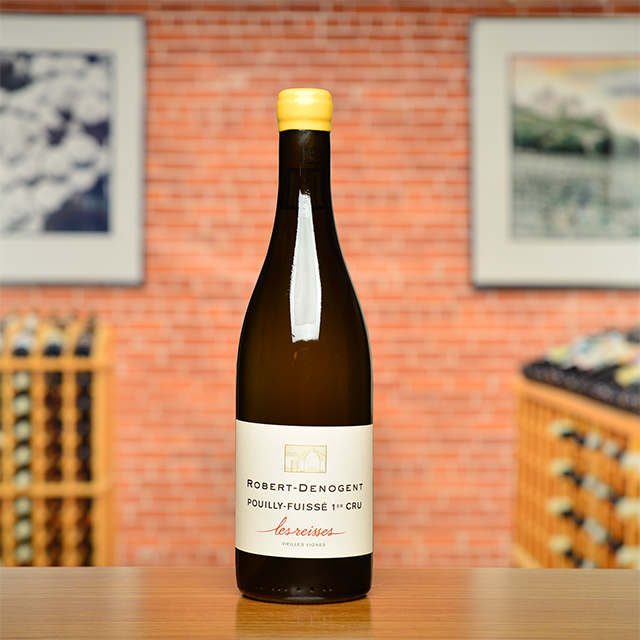Notify me
2019 Viré-Clessé “En Châtelaine”
Domaine Robert-Denogent
Since in 2016, brothers Antoine and Nico at Robert-Denogent have been experimenting more. For example, they’ve been testing more biodynamic farming practices and using less new wood in which to age their wines. Beginning in 2017, Viré-Clessé “En Châtelaine” is a new bottling—50% of which was sourced from vines planted in 1917—and it wasn’t aged in wood at all. Instead, it was fermented and aged in a concrete tank. The result is classy, pure, and precise Chardonnay, evoking freshly crushed apples, crushed stones, and citrus zest. It would be perfect alongside baked steelhead trout.
—Tom Wolf
| Wine Type: | white |
| Vintage: | 2019 |
| Bottle Size: | 750mL |
| Blend: | Chardonnay |
| Appellation: | Viré-Clessé |
| Country: | France |
| Region: | Burgundy |
| Producer: | Domaine Robert-Denogent |
| Winemaker: | Antoine and Nico Robert |
| Vineyard: | Planted in 2003 (50%), 1917 (50%), 1.2 ha |
| Soil: | Limestone, marl |
| Aging: | Fermented and aged in concrete tank for 12 months |
| Farming: | Biodynamic (certified) |
| Alcohol: | 15% |
More from this Producer or Region

2022 Clos de Vougeot Grand Cru
France | Burgundy
Méo-Camuzet’s Vougeot is marked by richness, concentration, velvety structure, broad aromatics, length, and power.

2022 Pouilly-Fuissé 1er Cru “Vers Cras Vieilles Vignes”
France | Burgundy
Ancient vines, stunning Chardonnay.

2022 Pouilly-Fuissé “La Croix Vieilles Vignes”
France | Burgundy
Bursting with energy and joy, this wine is bound to bring out the best of your inner bon vivant.

2023 Chablis 1er Cru “Vaillons”
France | Burgundy
A stunning value from one of Chablis’ oldest premier cru vineyards, with a lovely mouthful of stone fruit and hint of lemongrass.

2020 Pouilly-Fuissé “La Croix Vieilles Vignes”
France | Burgundy
Bursting with energy and joy, this wine is bound to bring out the best of your inner bon vivant.

2022 Rully Blanc “Les Saint-Jacques”
France | Burgundy
Despite its voluptuousness, the wine is dry, fresh, very stony, and even salty.

2023 Mâcon-Villages
France | Burgundy
With mouthwatering notes of citrus, honey, and the faintest salinity, the Robert brothers’ Mâcon-Villages is immediately approachable (read: gulpable).

2022 Saint-Véran “Les Pommards Vieilles Vignes”
France | Burgundy
More-than-fifty-year-old vines running through limestone and clay produce a wine that offers a creamy and luscious mouthfeel intertwined with a dry, stony minerality.

2022 Pouilly-Fuissé “Les Reisses Vieilles Vignes”
France | Burgundy
This wine has an impressive track record of aging, developing luscious notes of smoke, honey, butterscotch, and marzipan after ten to fifteen years in bottle.

2019 Pouilly-Fuissé ”Climat Vieilles Vignes“
France | Burgundy
Limited to vintages where the weather hinders production of individual bottlings, Climat renders all the chart-topping qualities of the Robert family’s Pouilly Fuissé holdings.
About The Producer
Domaine Robert-Denogent
About The Region
Burgundy

In eastern central France, Burgundy is nestled between the wine regions of Champagne to the north, the Jura to the east, the Loire to the west, and the Rhône to the south. This is the terroir par excellence for producing world-class Pinot Noir and Chardonnay.
The southeast-facing hillside between Dijon in the north and Maranges in the south is known as the Côte d’Or or “golden slope.” The Côte d’Or comprises two main sections, both composed of limestone and clay soils: the Côte de Nuits in the northern sector, and the Côte de Beaune in the south. Both areas produce magnificent whites and reds, although the Côte de Beaune produces more white wine and the Côte de Nuits more red.
Chablis is Burgundy’s northern outpost, known for its flinty and age-worthy Chardonnays planted in Kimmeridgian limestone on an ancient seabed. Vézelay is a smaller area south of Chablis with similar qualities, although the limestone there is not Kimmeridgian.
To the south of the Côte de Beaune, the Côte Chalonnaise extends from Chagny on its northern end, down past Chalon-sur-Saône and encompasses the appellations of Bouzeron in the north, followed by Rully, Mercurey, Givry, and Montagny.
Directly south of the Chalonnaise begins the Côte Mâconnais, which extends south past Mâcon to the hamlets of Fuissé, Vinzelles, Chaintré, and Saint-Véran. The Mâconnais is prime Chardonnay country and contains an incredible diversity of soils.
More from Burgundy or France
2020 Meursault-Blagny 1er Cru “La Genelotte”
Comtesse de Chérisey France | Burgundy
2017 Mazoyères Chambertin Grand Cru
Domaine Taupenot-Merme France | Burgundy
2024 Petit Chablis
Famille Savary France | Burgundy
2022 Clos de Vougeot Grand Cru
Domaine Méo-Camuzet France | Burgundy
2022 Chassagne-Montrachet 1er Cru “Les Vergers”
Bruno Colin France | Burgundy
2022 Puligny-Montrachet 1er Cru “La Truffière”
Bruno Colin France | Burgundy
2022 Beaune 1er Cru “Les Montrevenots”
Antoine Jobard France | Burgundy
2007 Vosne-Romanée 1er Cru “Aux Brûlées”
Domaine Méo-Camuzet France | Burgundy
2023 Givry Blanc “Clos des Vignes Rondes”
Domaine François Lumpp France | Burgundy
2022 Pouilly-Fuissé 1er Cru “Vers Cras Vieilles Vignes”
Domaine Robert-Denogent France | Burgundy
2022 Mercurey Rouge “Les Montots”
Domaine de Villaine France | Burgundy
2022 Santenay Rouge “Vieilles Vignes”
Bruno Colin France | Burgundy
2020 Meursault-Blagny 1er Cru “La Genelotte”
Comtesse de Chérisey France | Burgundy
2017 Mazoyères Chambertin Grand Cru
Domaine Taupenot-Merme France | Burgundy
2024 Petit Chablis
Famille Savary France | Burgundy
2022 Clos de Vougeot Grand Cru
Domaine Méo-Camuzet France | Burgundy
2022 Chassagne-Montrachet 1er Cru “Les Vergers”
Bruno Colin France | Burgundy
2022 Puligny-Montrachet 1er Cru “La Truffière”
Bruno Colin France | Burgundy
2022 Beaune 1er Cru “Les Montrevenots”
Antoine Jobard France | Burgundy
2007 Vosne-Romanée 1er Cru “Aux Brûlées”
Domaine Méo-Camuzet France | Burgundy
2023 Givry Blanc “Clos des Vignes Rondes”
Domaine François Lumpp France | Burgundy
2022 Pouilly-Fuissé 1er Cru “Vers Cras Vieilles Vignes”
Domaine Robert-Denogent France | Burgundy
2022 Mercurey Rouge “Les Montots”
Domaine de Villaine France | Burgundy
2022 Santenay Rouge “Vieilles Vignes”
Bruno Colin France | Burgundy
Kermit once said...

Kermit once said...
Great winemakers, great terroirs, there is never any hurry. And I no longer buy into this idea of “peak” maturity. Great winemakers, great terroirs, their wines offer different pleasures at different ages.
Inspiring Thirst, page 312

















